72-Hour Bug-Out Bag, AKA “Fast BOB”
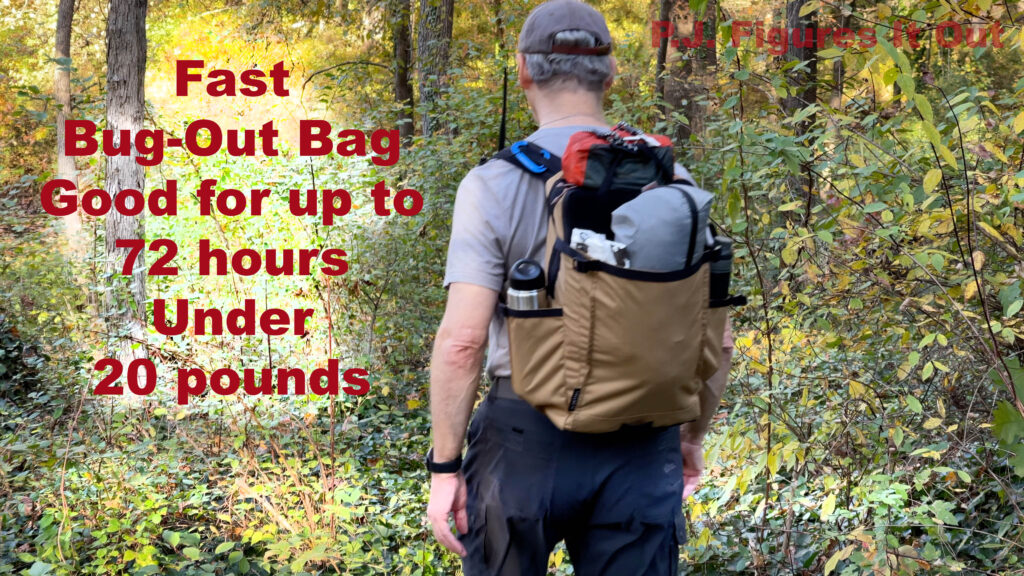
The Fast BOB is designed to help keep you alive when you have to move fast in an emergency. The link to the short video is here.
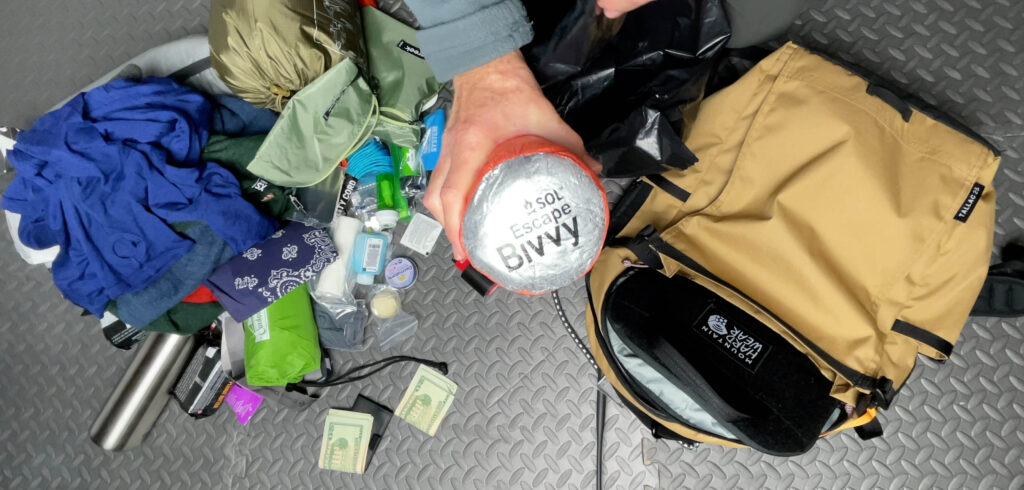
I have two bug-out bags, the Fast BOB and the Big BOB (the article on the Big BOB will be coming soon). The Fast BOB is designed to help keep me alive for at least 72 hours. It forms the core of the Big BOB, which is designed to keep me alive for over a week, and possibly indefinitely.
The bag itself is the Mountain Hardwear Tallac 25 (no longer available, but their JMT 35 will also work). The more I use it the more I like it. If I wanted to spend several hundred more dollars I could get a bag made from cuban fiber that is nine ounces lighter. For the Fast BOB, I recommend a bag that is 25-30 liters, is tough, and has big bottle pouches on the sides and a front pocket. Mine doesn’t have a waist belt, and if the overall weight is kept under 20 pounds most people don’t need one.
This article assumes that you will be putting together a bag and leaving it for periods of up to six months. You should rotate out the food, charge the battery packs, and switch out the equipment for warm and cold seasons at the appropriate times. I put in the cold weather gear around September 30 and switch to warm season gear sometime in May, but your particular climate may require different dates.
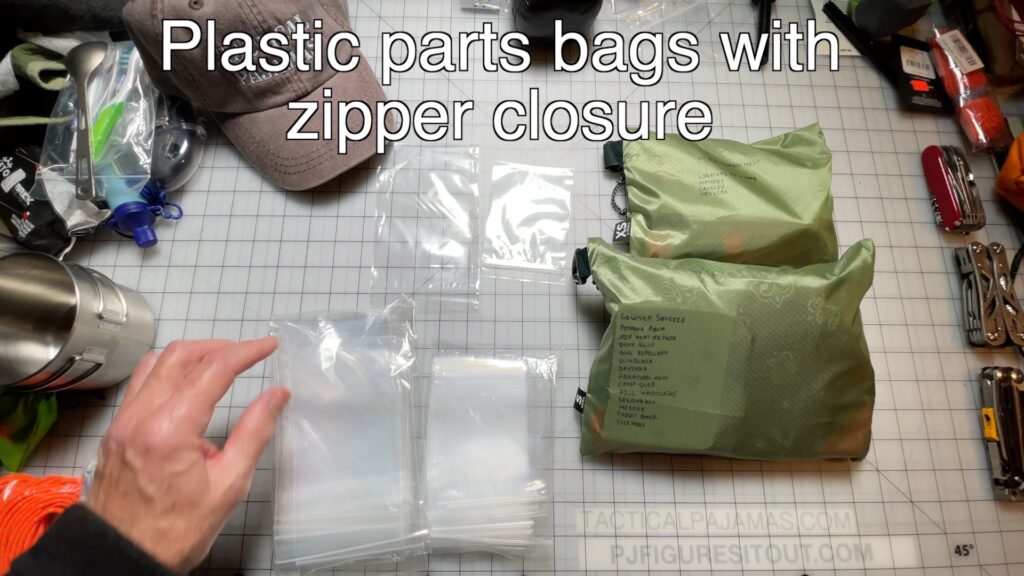
Before I get to the contents, some tips on organization. First, I like these little zip-close plastic parts bags. They’re smaller and stiffer than sandwich bags, and the perfect size for many items or sets.
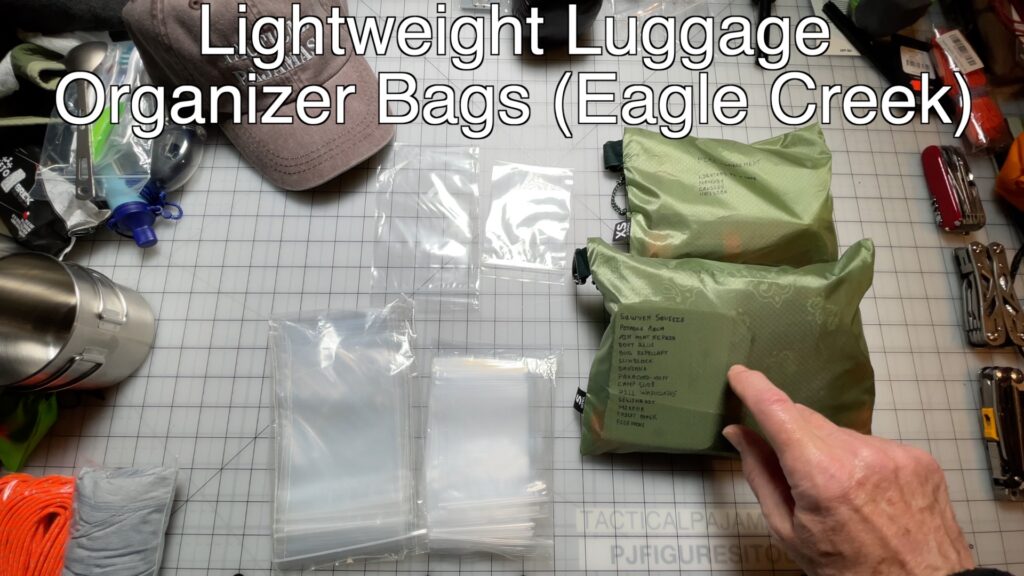
One level up from the parts bags is these luggage organizing bags from Eagle Creek. They are lightweight and tough, and I write the contents on each one so I can make sure everything that’s supposed to be in them is in them.
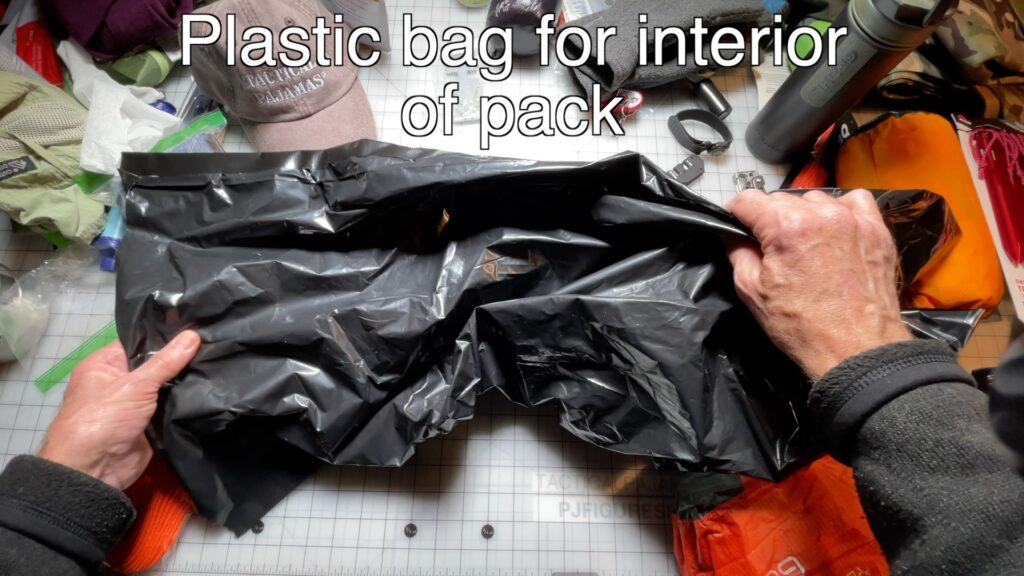
Also, don’t rely on outside covers to keep the contents of the backpack dry. Take a thick plastic contractor trash bag, and cut it to a size that can fold down over the contents without leaving too much excess. This will also enable you to quickly transfer everything from the Fast BOB to the Big BOB if required. The Big BOB should have a similar plastic bag of its own. Cut the bag down as much as possible to save weight and bulk.
*Money— Some people advocate having $1000 in your BOB. I don’t have a thousand dollars just laying around, do you? Since the price of gas has gone up so much, I’d recommend about $350, if you can spare it.
*Credit card(s)— I recommend that you pack at least one.
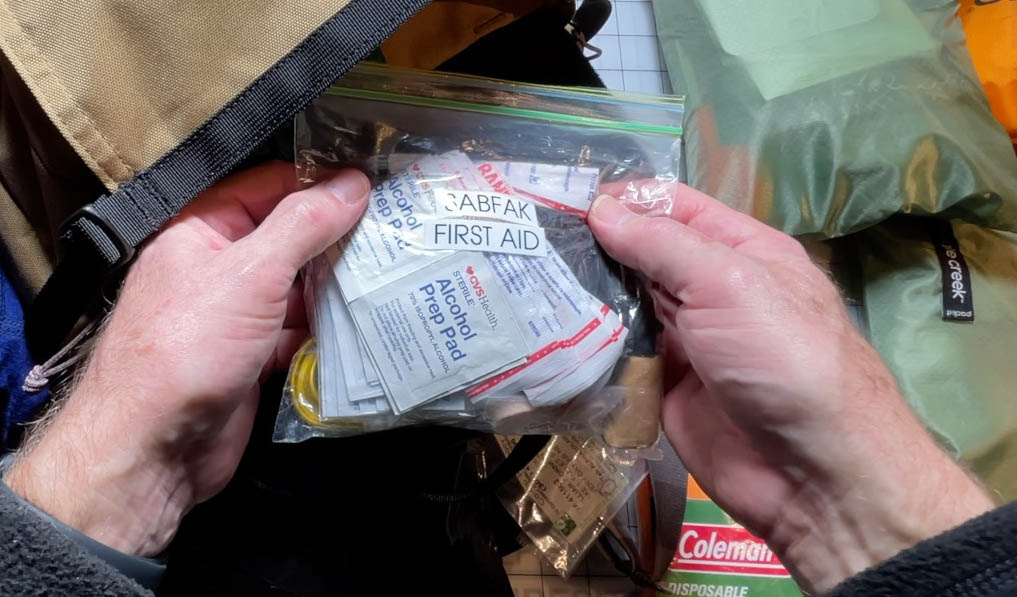
*SABFAK first aid kit— With this 6-ounce kit you can treat anything from gunshot wounds to amputations to wild animal attacks to food poisoning. See more at this link.
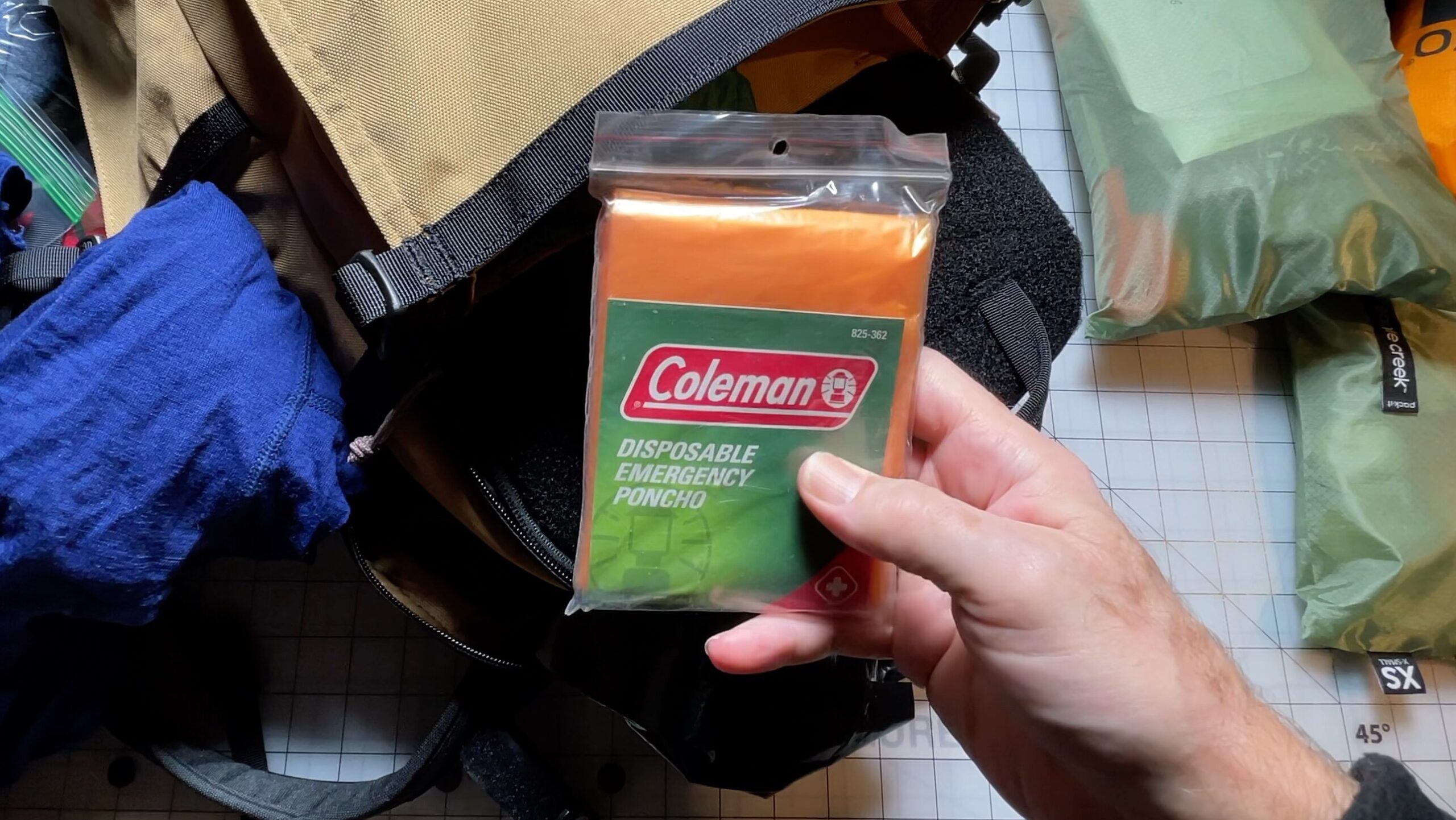
*Poncho— There are plastic ones, like the Coleman, which are cheap and light; expensive ones which are tough, breathable, versatile, and heavy; and a few in-between. The Gloryfire Breathable Poncho is excellent, but weighs two pounds and costs over $80. In a pinch it can serve as a tarp or the outer cover of a sleeping system. More information in this article.
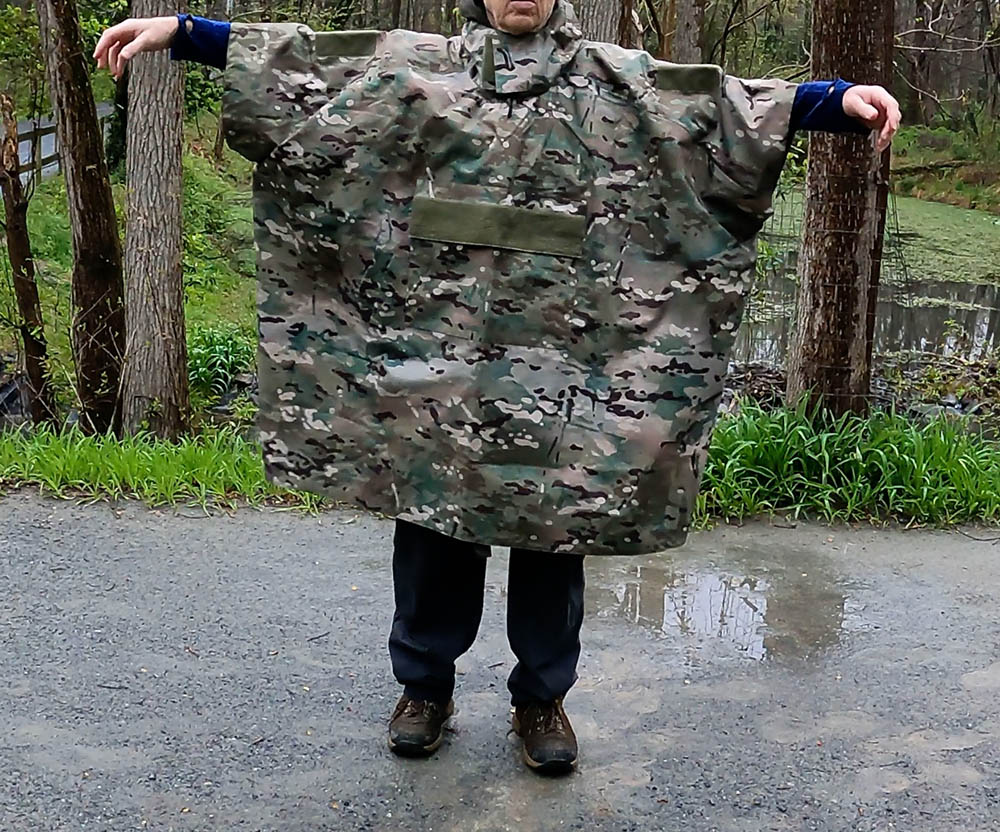
*Sewing kit (small)— If a strap comes off your pack or your clothing rips a seam, a simple needle and thread can be a lifesaver.
*Water filter— You’ll need a good, lightweight water purification system. The Grayl is extremely convenient, but it’s not necessary to spend that much money. The Sawyer Squeeze packs smaller and is reasonably effective, and is much cheaper. Read more on the Grayl in this article.
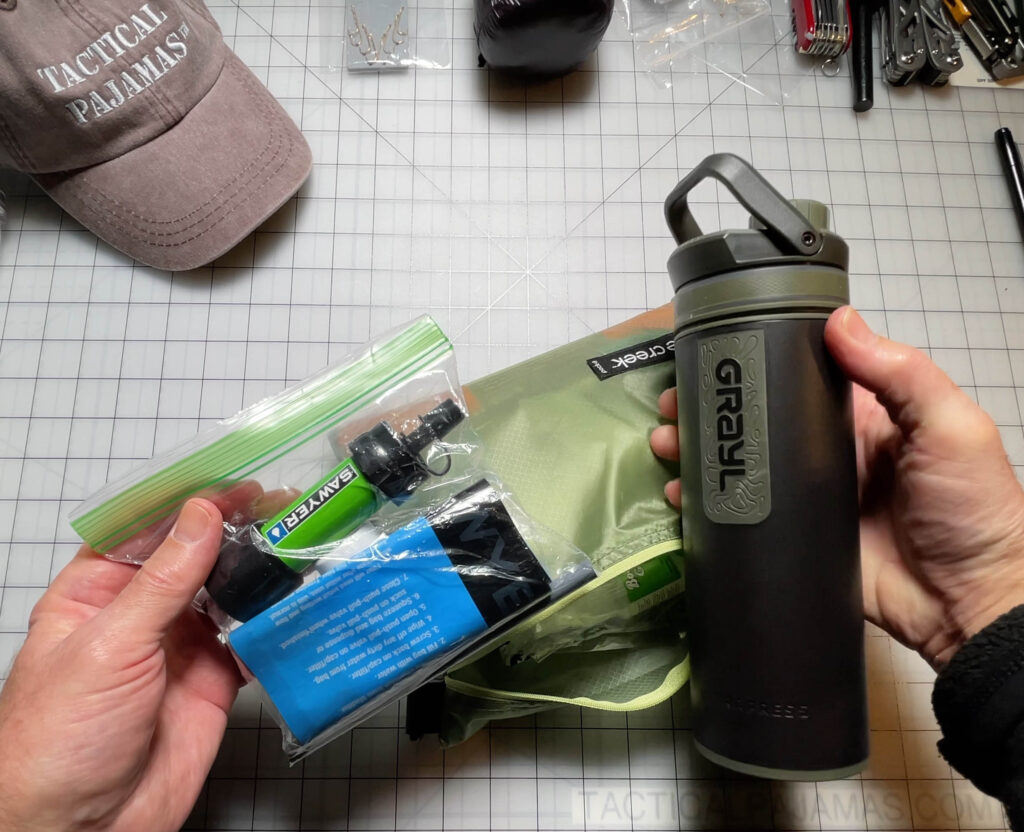
*Water purification tablets— As a back-up to the water filter. Put them in a quart of water and four hours later it’s safe to drink, at least in terms of microbial contamination.
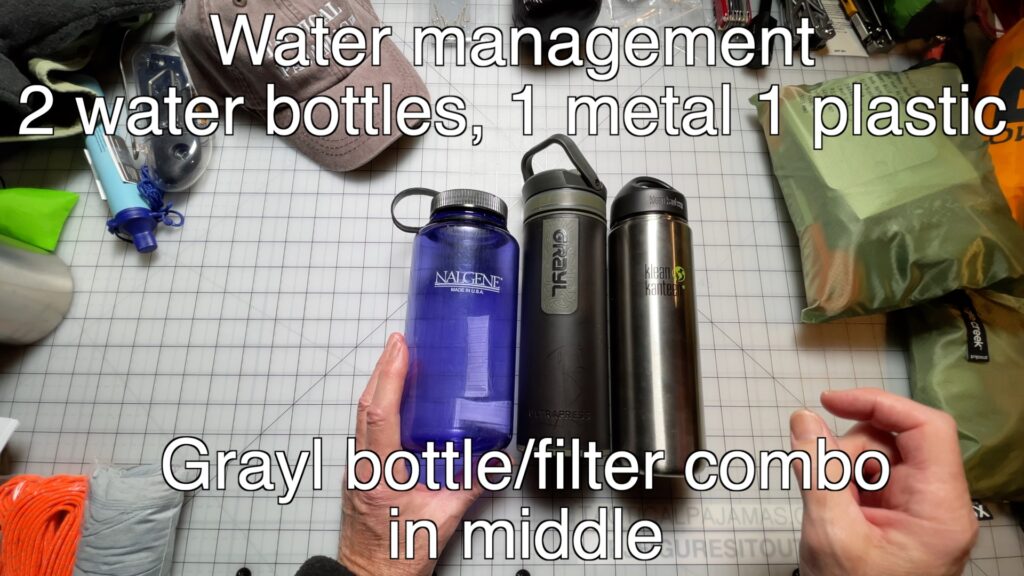
*Water bottle— If you aren’t using the Grayl, get one metal and one plastic bottle, both with large mouths for scooping up water from streams and such. You can use the metal one to boil water in as a second back-up if you’re out long enough to use up all your water purification tablets. The Grayl is its own bottle, so if you use it you’ll just need one other bottle, preferably metal.
*Pre-filled water bottles— If you’re bugging out because of a natural disaster, for the first several miles you probably won’t have time to stop and filter water, assuming you can find it at all. Put a couple store-bought water bottles in a plastic grocery bag and tie it to a strap on the BOB. Rotate them out every month or two to keep them fresh.
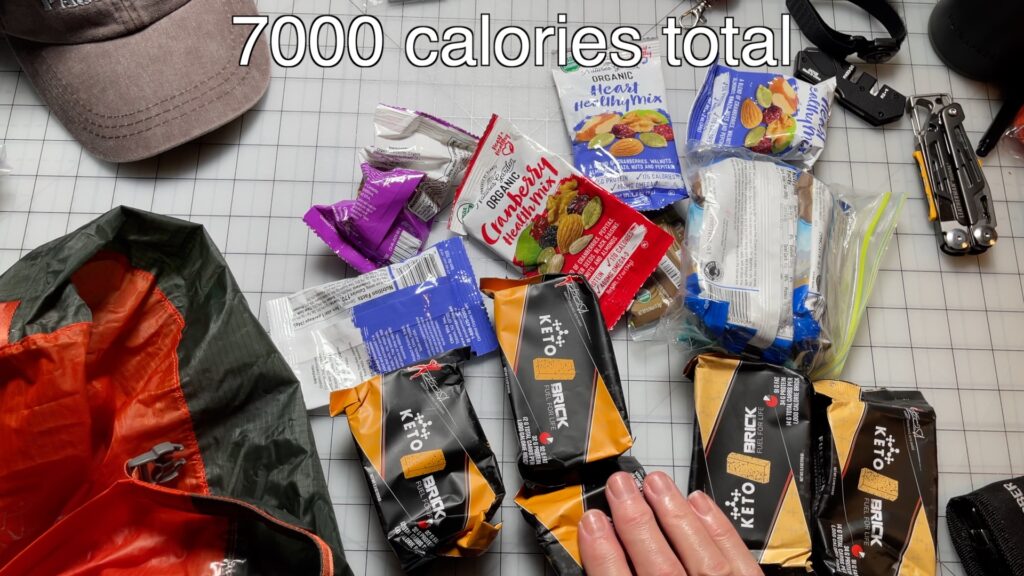
*Food bars/freeze-dried meals for two days rations— You can survive for up to three weeks without food if you’re sedentary, but if you have to hike you need fuel. 2000 calories a day is the minimum, and you can burn up 5,000 calories a day or more on a forced hike. One of the most calorie-dense, shelf-stable foods is Keto Brick. You can use it as the base for a total diet if you are on keto or as a fat-heavy supplement if you’re not. Each 1000-calorie bar weighs less than six ounces, and 3000 calories is a bit over a pound. I also carry five Cliff bars and five packs of trail mix from Costco, which give me another 2000-2500 calories. The orange bag on the left is a lightweight dry bag, which is very handy for holding all the food and helps contain the odors so animals can’t detect them as easily.
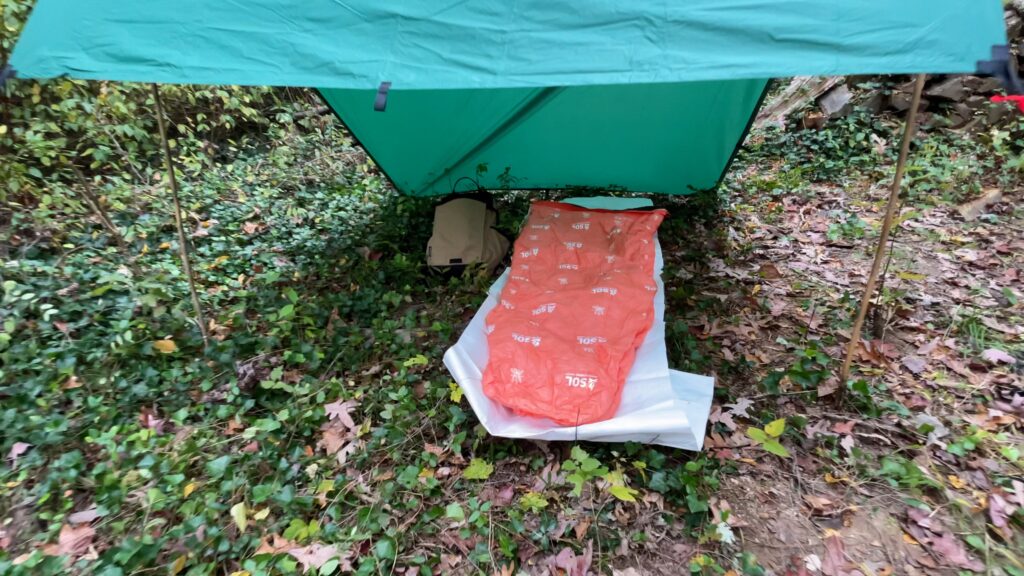
*SOL Escape Bivvy— This is a great primary element for a survival sleeping system. The secret to its performance is the silvery inner surface that reflects heat back toward your body. If you are wearing sufficient clothing and the weather is not super-cold, it may be all you need. However, people vary greatly in their response to exposure, so test it out first. I find that with just the SOL Bivvy, if I’m wearing winter clothing I’m comfortable sleeping down to about 55 degrees, and the survival rating would be about 10 degrees lower. Note that I get cold very easily, and for normal people it may work down to much lower temperatures.
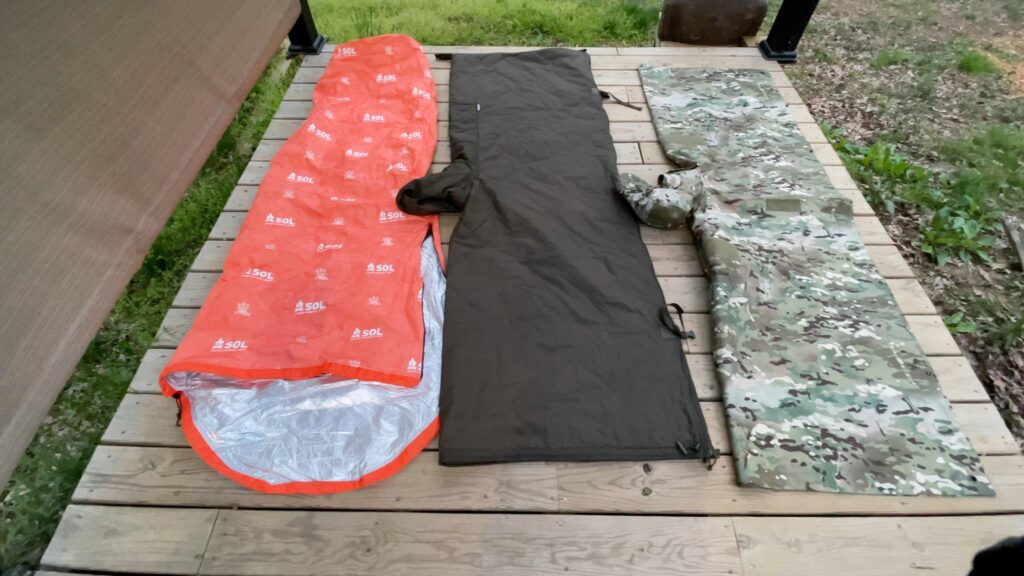
*Helikon Swagman– The Helikon Swagman is an excellent survival garment that can serve as a waterproof insulated poncho, with straps and clips that cinch it close to the body to retain heat in very cold weather. It has a zipper that turns it into a sleeping bag, good down to about 55 degrees. When used inside the SOL Escape Bivvy as a sleep system, the comfort rating is about 43 degrees and the survival rating is near freezing, assuming sufficient warm clothing is worn.
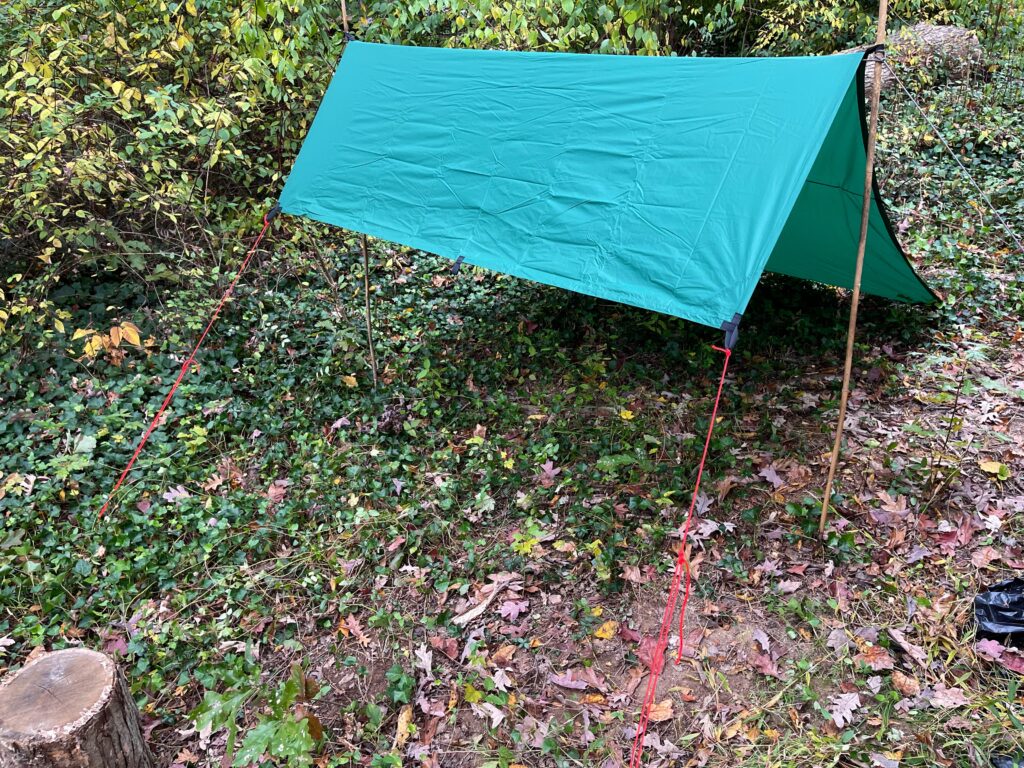
*Tarp or Tent– You might be able to get by with a cheap tarp from the hardware store, but I like the Aqua-Quest tarps that are light, tough, and have lots of tie-outs. A 7’x10′ would work for one person, but for two people I’d recommend a 10’x10′.
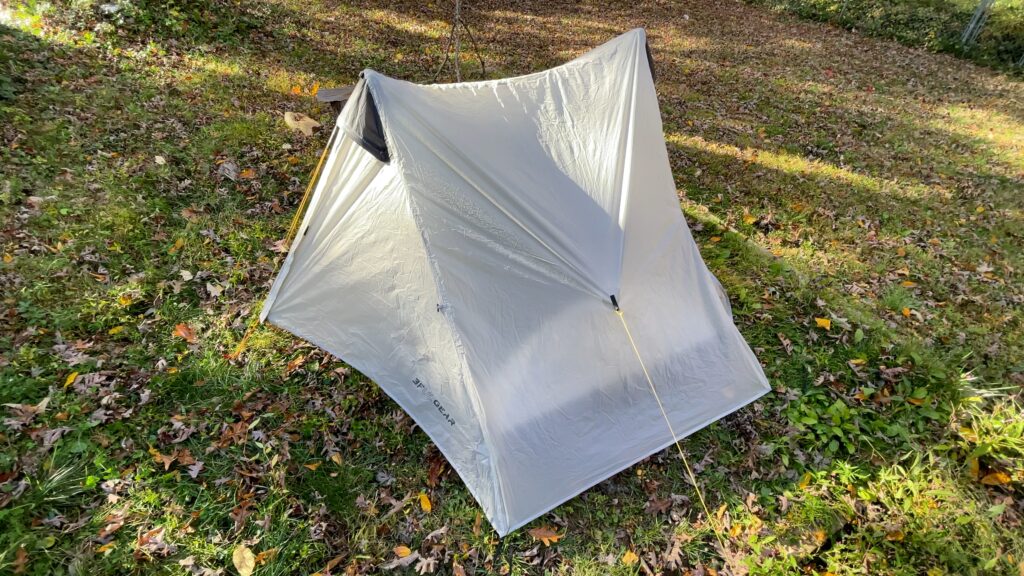
If you want to use a tent, the Lanshan 2 Pro is a good combination of cost ($175), small packed size, light weight (2.3 lbs), and performance. If you’re not claustrophobic the Lanshan 1 is even smaller, lighter, and cheaper.
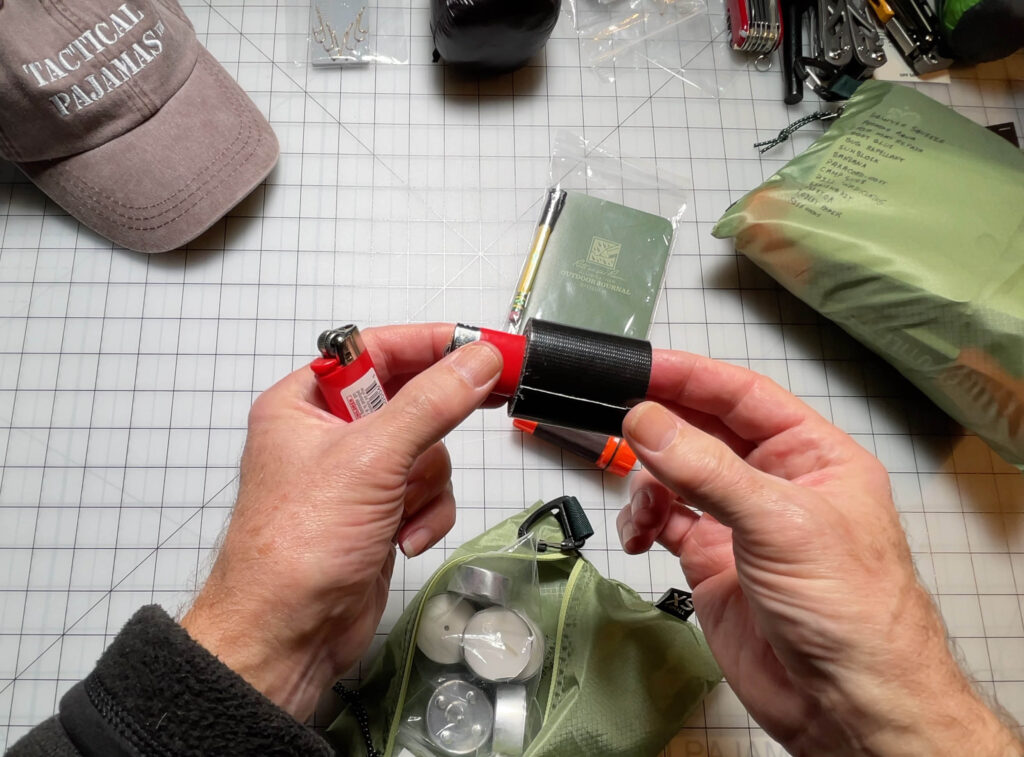
five feet of Gorilla Tape
*Lighters— For the Fast BOB, I recommend two cheap lighters. Wrap one or both lighters with up to five feet of Gorilla Tape.
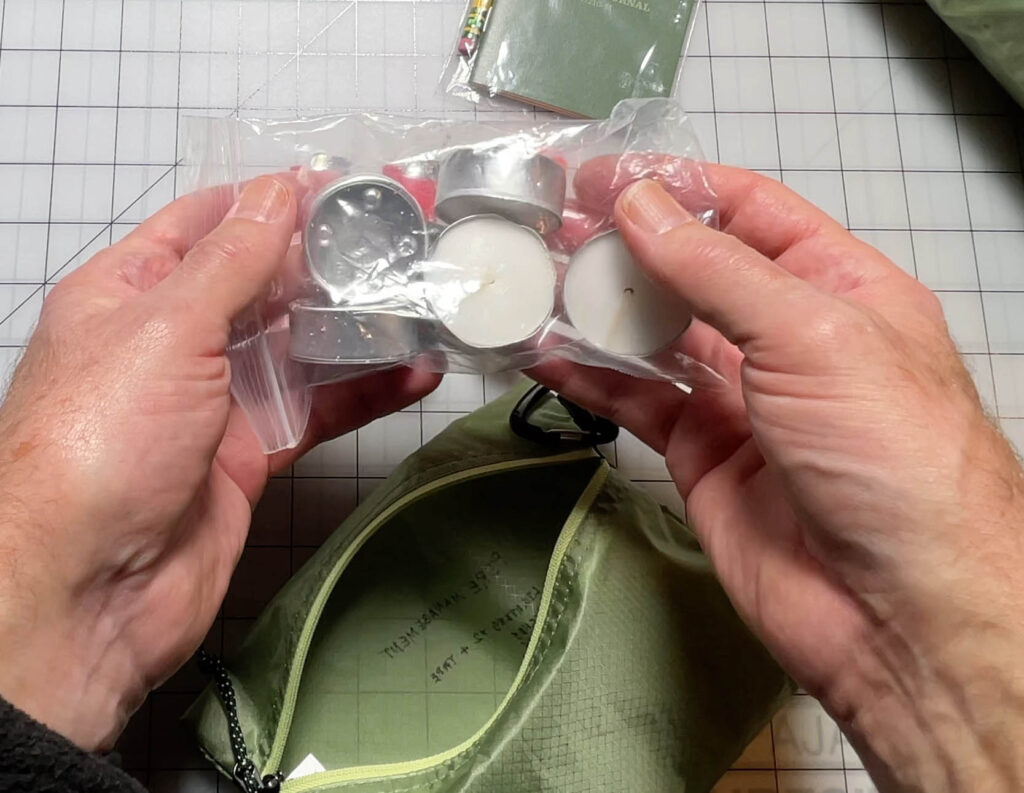
*Candles/tinder (for use in starting fires)— If the weather is wet you’ll need help getting a fire started. Tea candles like this are cheap, lightweight, and very effective.
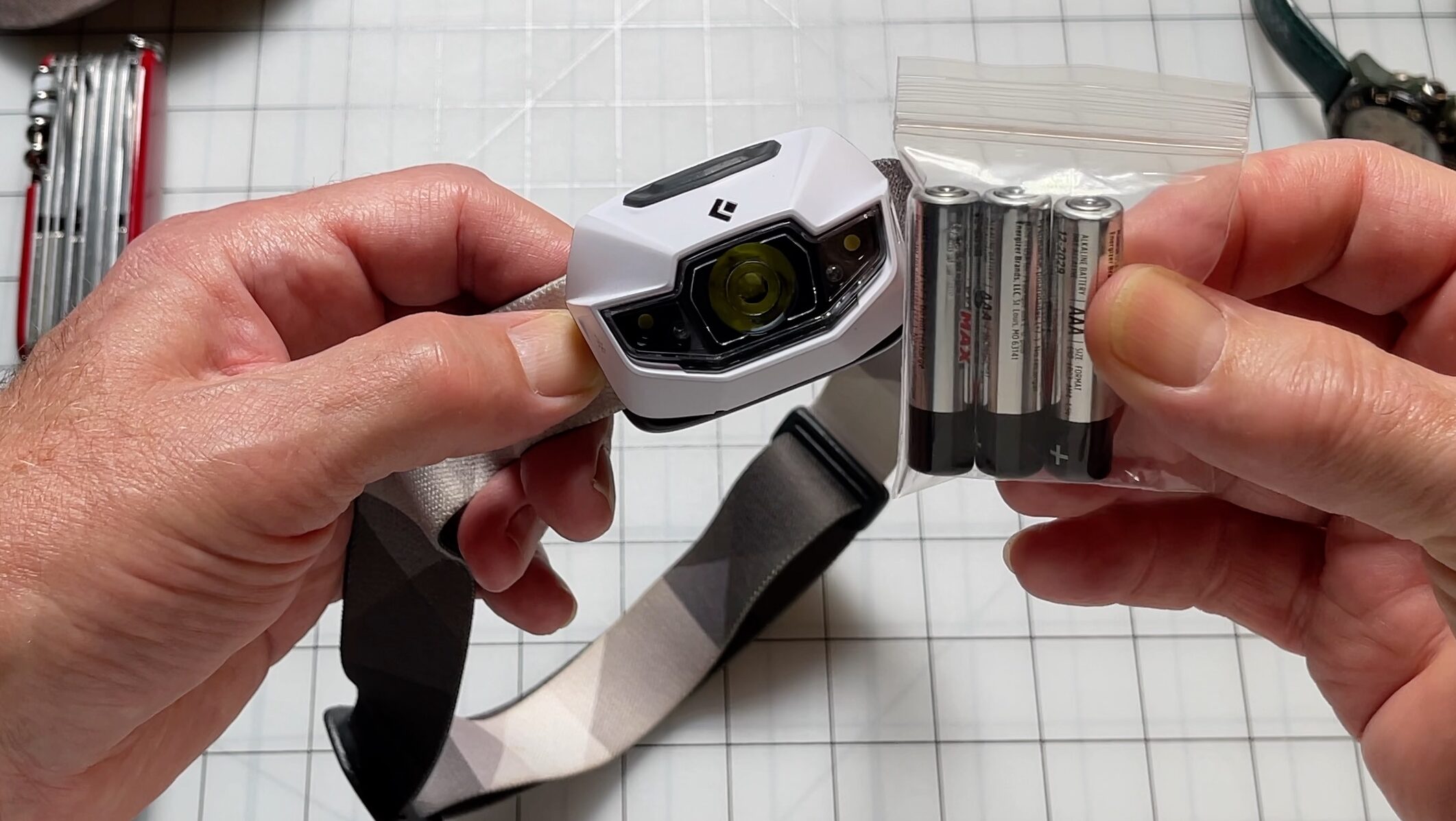
*Flashlight (must be dimmable so it can last many hours if necessary)— I prefer a dimmable headlamp that takes AAA batteries, with the batteries stored outside the device. Re-chargeable flashlights are wonderful, but the batteries can lose charge very quickly in storage.
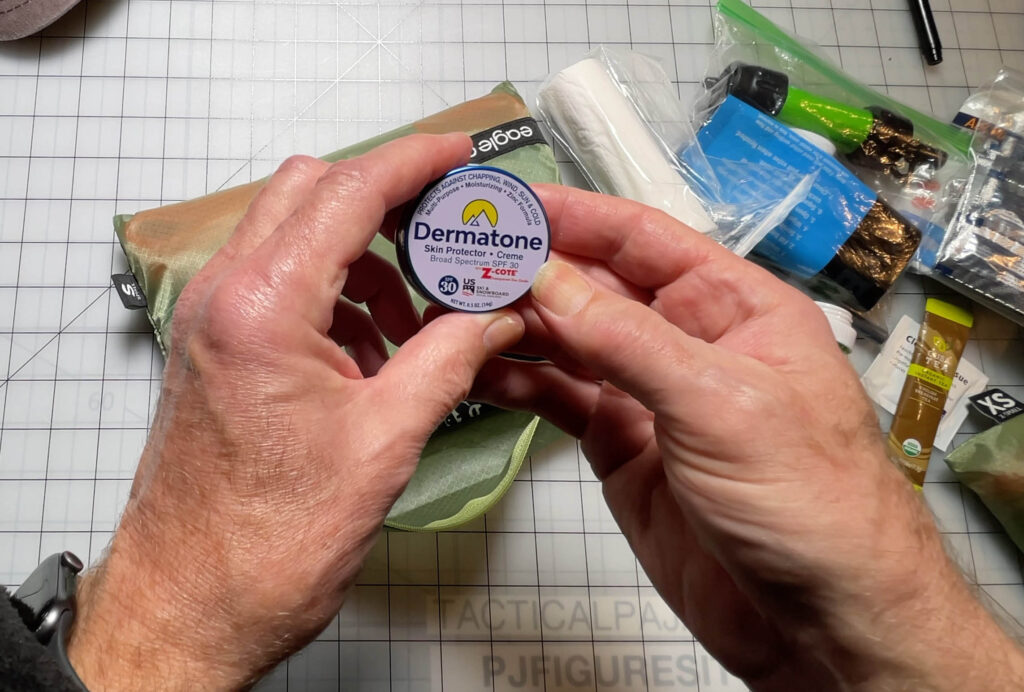
*Sunblock/lip balm— A zinc-based sunblock will have a longer shelf life than most other types. These are small, if you’ll need to cover lots of exposed skin you might want to pack two or three.
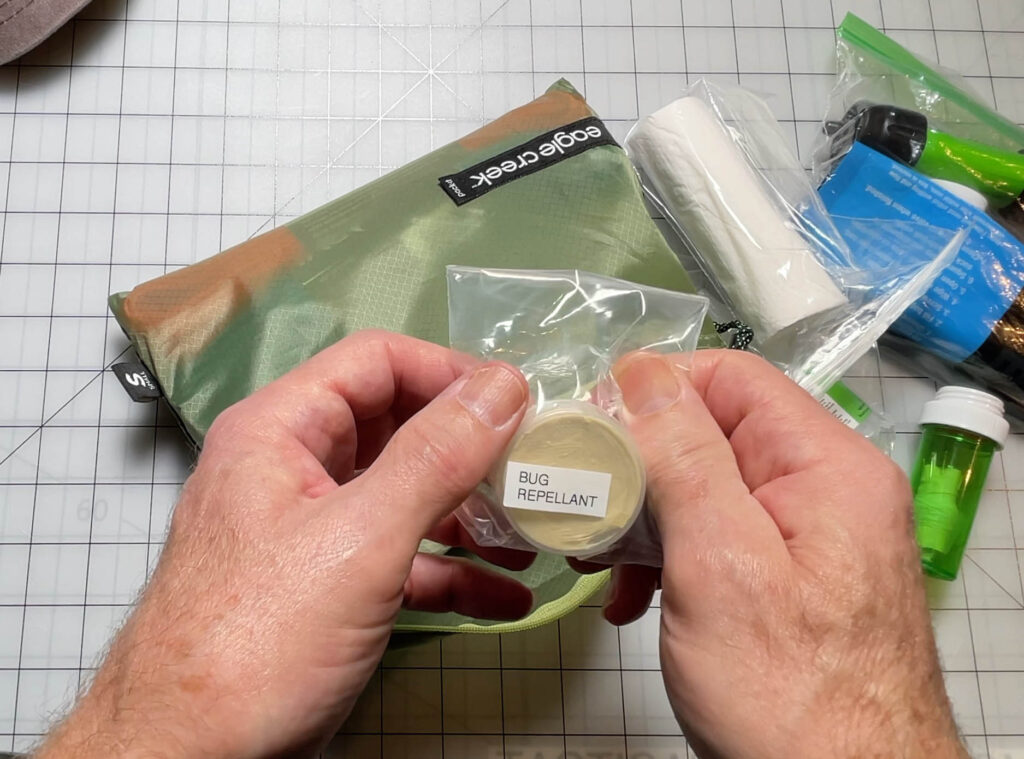
*Bug repellant— I recommend non-Deet repellants, mainly because Deet will cause the materials in most tents and sleeping bags to disintegrate. This type right here, called “No Bite Me,” goes a long way. I transferred it from a larger puck-sized jar into this smaller one, which will last 3-5 applications, and it’s very effective. As you can see, I put it inside of a plastic parts bag so that if it comes apart it will not make a mess.
*Hat— Get a lightweight type with a full brim or back-flap to keep the sun off the back of your neck, or a baseball-type cap and use your bandanna as a neck cape.
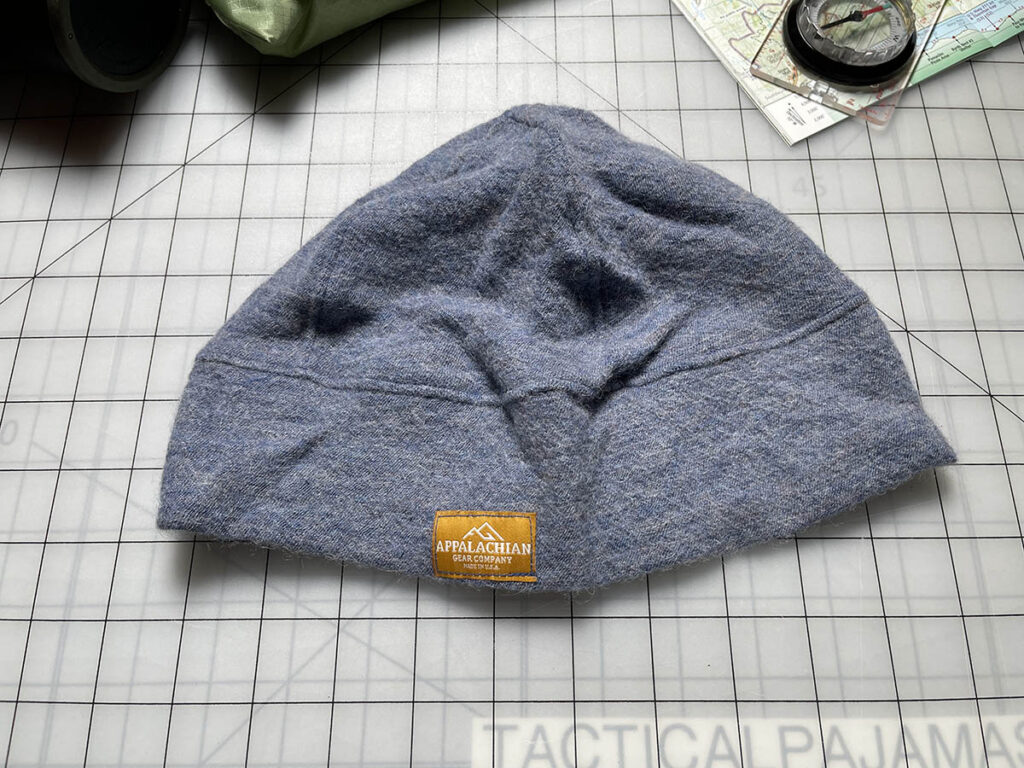
Beanie— You’ll want something more insulating than the brimmed hat for when it gets cold. I have this alpaca-wool beanie, but any good one will do. It also forms part of my sleep system.
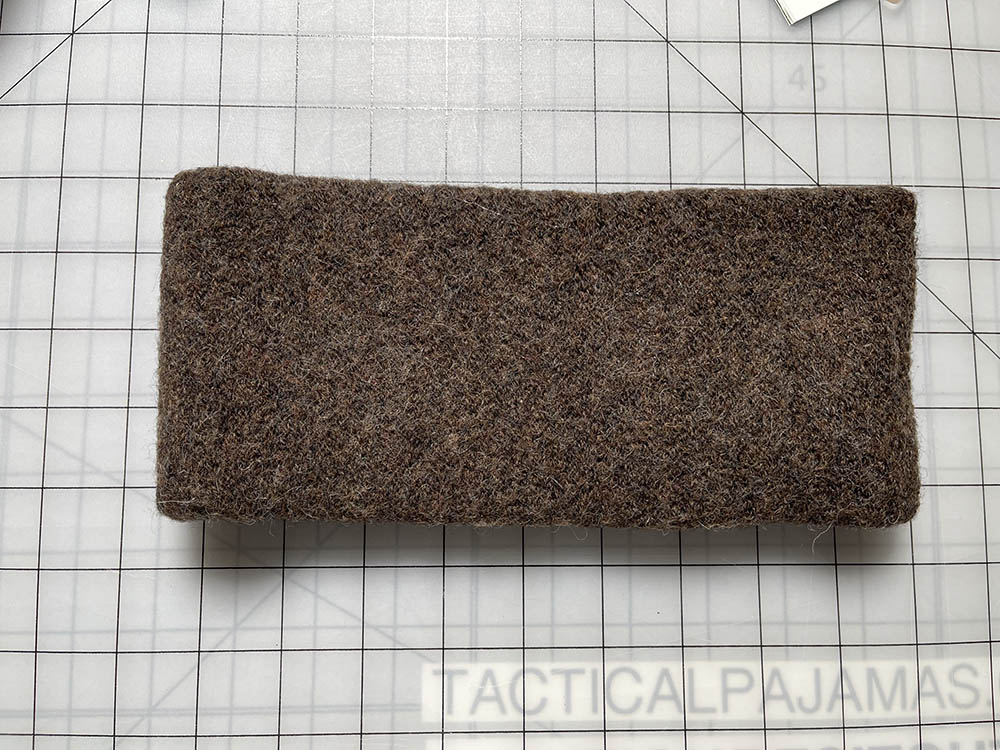
The same manufacturer makes this neck warmer, which helps greatly when I’m sleeping outside in cold weather.
*Bandana (maybe several)— From filtering water to sun protection to wrapping injuries, bandanas have tons of uses.
*Gorilla Tape, about 5-10 feet— for repairs from minor to major. You can even use it to tape up gaping wounds in dire emergencies. As shown above, wrap it around one of the lighters.
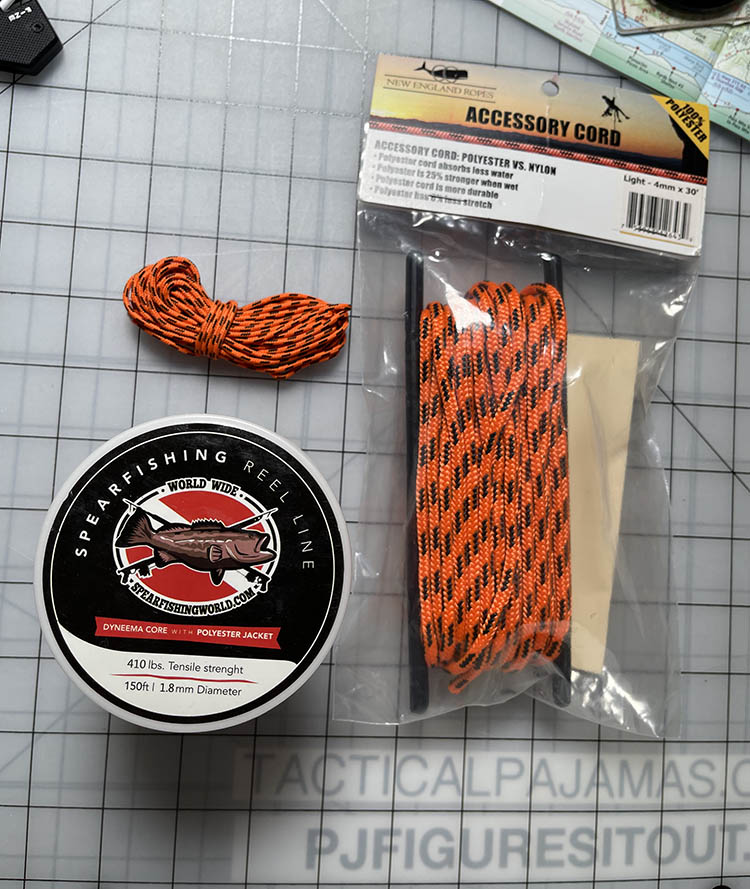
*100 feet paracord— For hanging your food up in bear country, and dozens of other uses. You can get the standard line that can hold up to 550 pounds, or the Dyneema-based cord that can deal with even more weight. The tiny 1.8mm spear-fishing line can deal with over 400 pounds, and you can pack four times the length for the same space and weight.
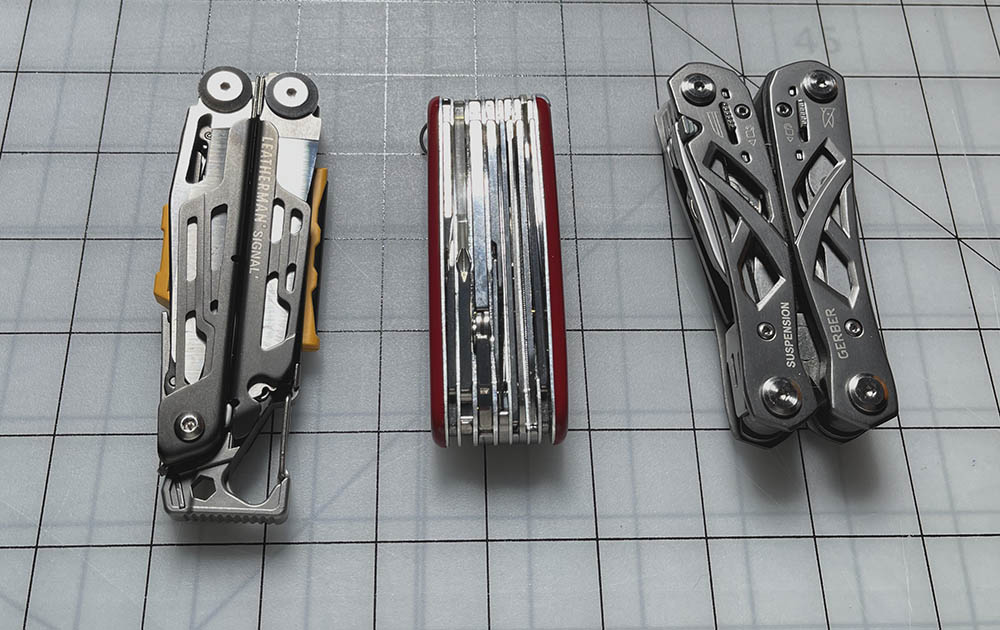
*Multi-tool and/or survival knife— The Gerber Suspension (R) has almost everything I recommend, and at the time of this writing only costs about $40. The Leatherman Signal (L) has better quality but costs nearly three times as much. The Swiss Champ (center) is excellent and versatile. The Signal has a whistle and ferrocerium rod but lacks scissors, the Suspension lacks a file, and the Swiss Champ has no lock-open capability. (Full comprehensive review of all three coming soon.)
*Can opener— This should be in the multi-tool you choose, if not then bring along a separate one.
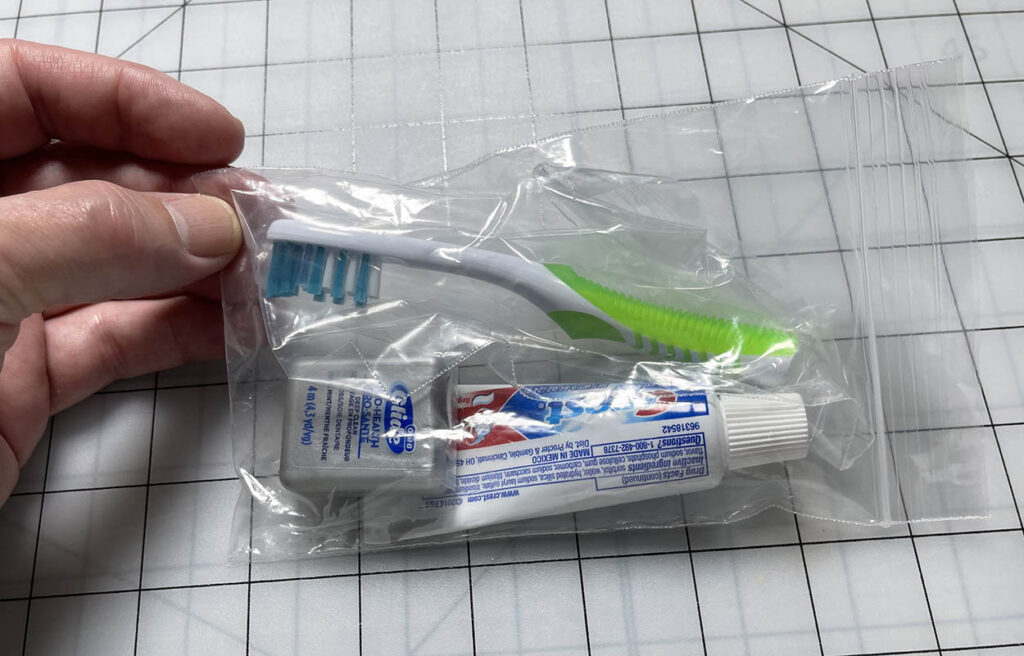
Toothbrush, paste, floss– Cut the end of the handle off of the brush to save space. I prefer to bring raw floss instead of flossers in plastic holders, as the floss can be used for sewing and other tasks if necessary.
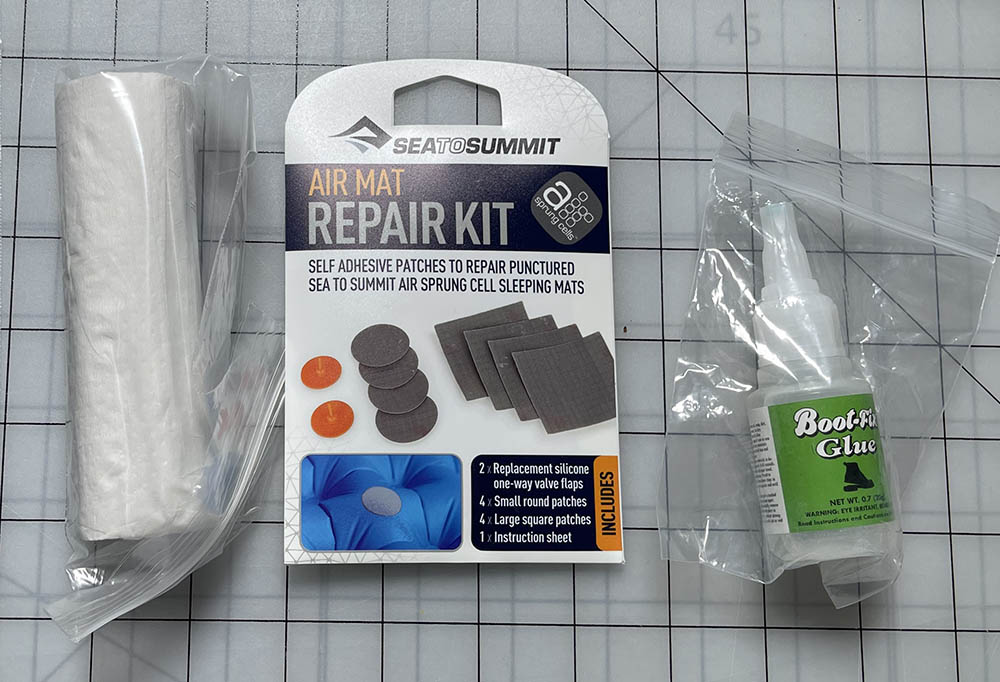
*Toilet paper— Coleman makes small rolls for campers. I like to have some along. If the toilet paper situation we had during the Wuhan Flu is anything to go by, take several and you’ll be able to trade them for their weight in gold.
*Mattress repair patches– Work on tents and tarps, too.
*Boot repair glue– Can fix all kinds of things.
*Lightweight wool or synthetic sweater— This can increase your capacity to deal with cold by 5-15 degrees. I like ones made of yak or alpaca wool (from Appalachian Gear Company, note that I do not get any % for the link, I just like their products), as they are warmer for the same weight. Get long-sleeves, you can always roll the sleeves up. As well, I’ve picked up excellent quality merino wool at thrift stores for under $10! For long-term storage put them in plastic bags with moth packets.
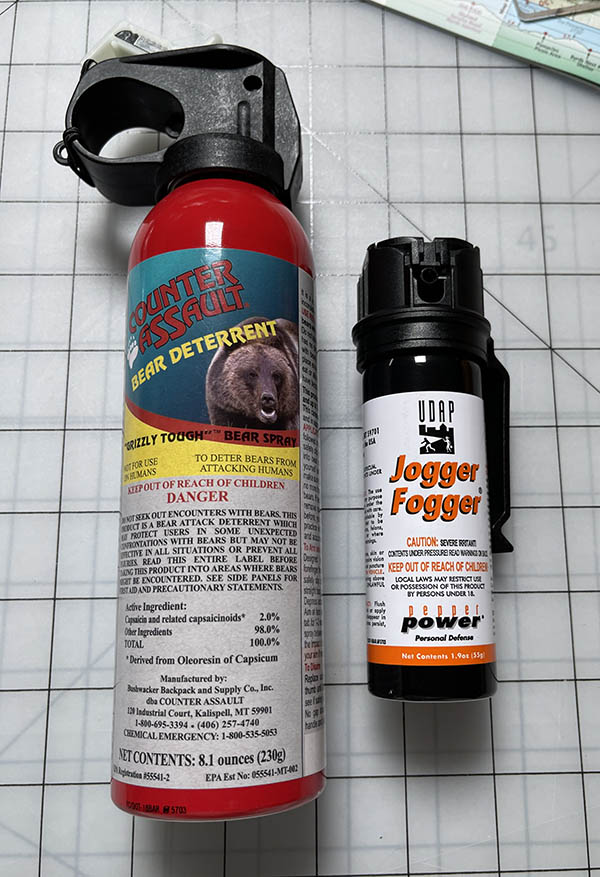
*Pepper/tear gas spray— Can be used as defense against both four-legged and two-legged attackers. Get as big a can as your paranoia requires. I usually carry at least a 2.5-ounce can in black bear country. If you get a small one make sure it shoots at least 15 feet. In grizzly country I carry a big can of Counter Assault Bear Spray.
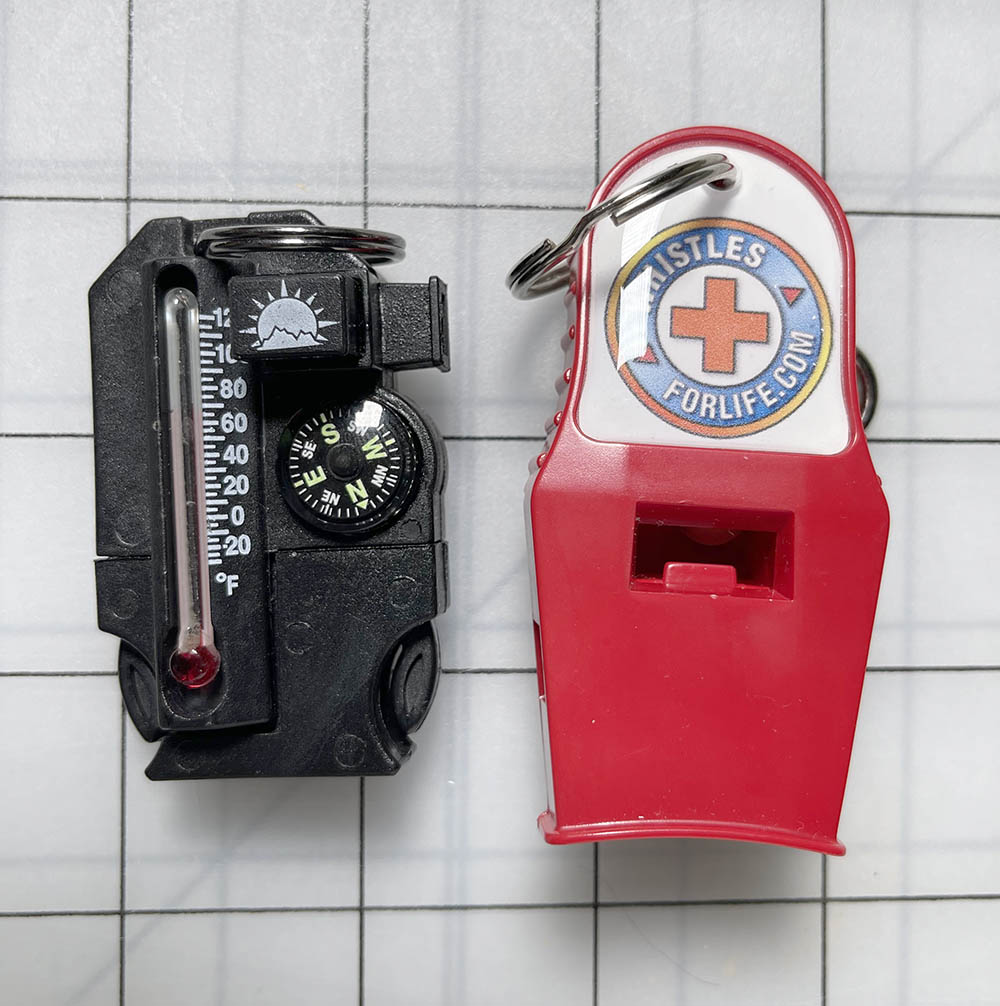
*Whistle— In a natural disaster situation, or if you’re lost, you’re going to want things that can help you be found. The Leatherman Signal has a whistle built-in. The device on the left has a whistle, a compass, a small ferrocerium rod, and a tiny serrated blade. The whistle on the right is very loud.
*A week’s worth of prescription medications— Don’t forget these.
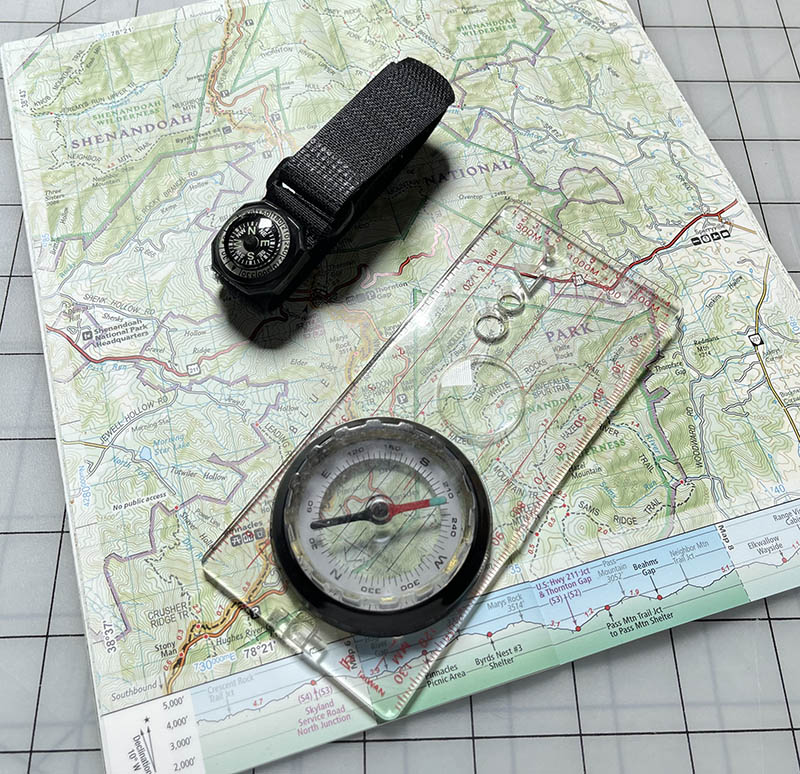
*Compass— You should have at least a cheap compass in your Fast BOB. Get a better one if you think your situation will require it. Waking up in the morning and heading off in the wrong direction is more common than a lot of hikers would like to admit, especially when you have to set up camp after dark.
*Signal mirror— Again, in some situations, you’ll want to be seen and found.
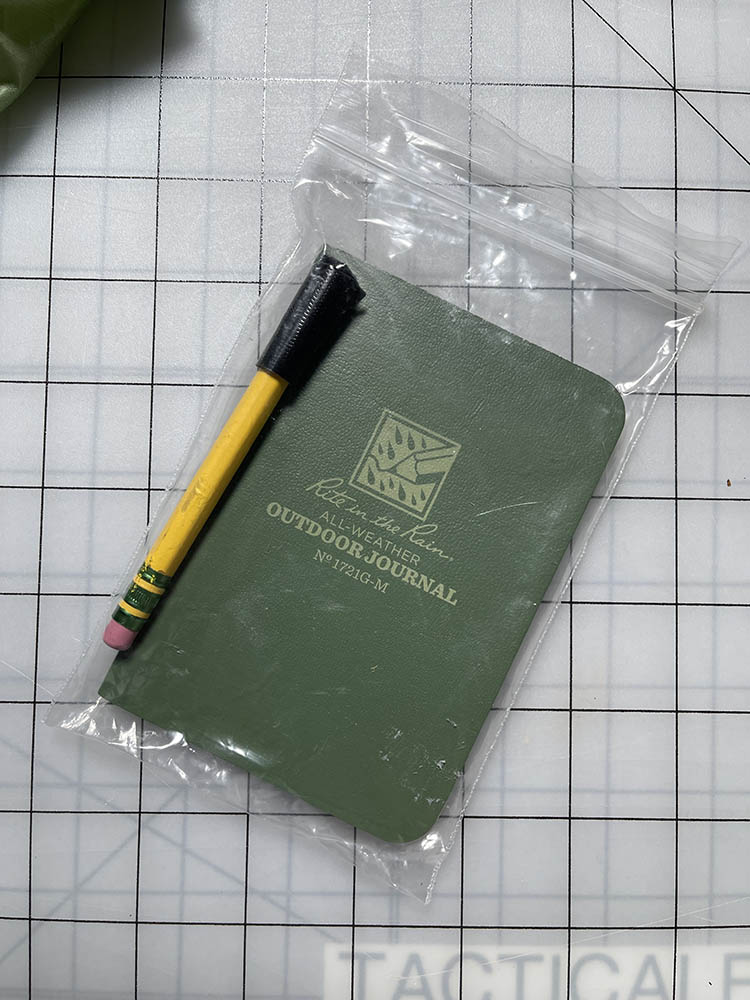
*Waterproof notebook— Human memory is fallible, write things down. Keep a daily journal, because you never know how long you’ll be out.
*Pencil— Doesn’t have to be fancy, it just has to work with the notebook. I keep both in a little plastic zip-lock parts bag, and I cover the pointy end of the pencil with some tape so it doesn’t poke through the bag.
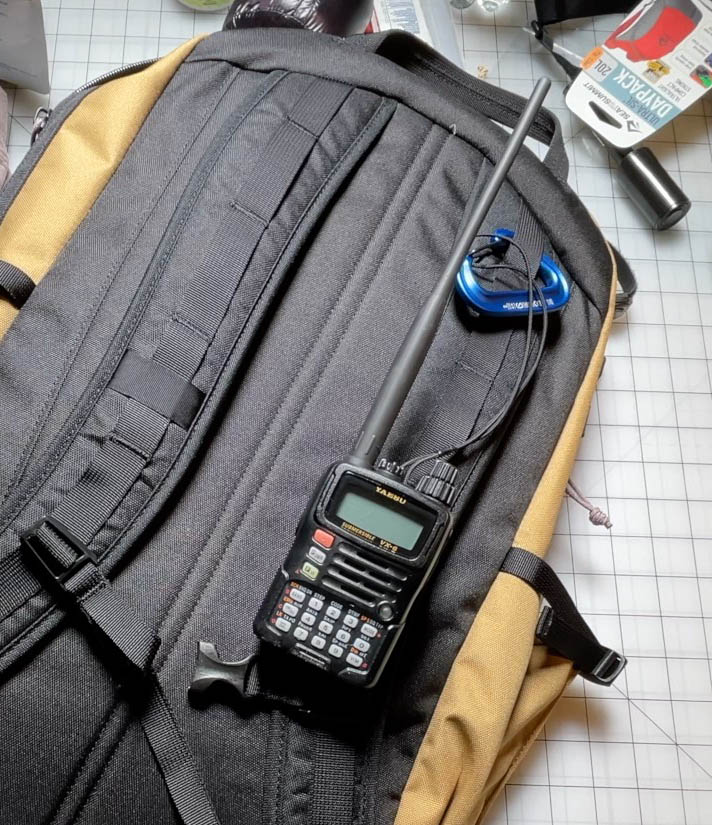
*Radio— Some pundits will recommend that you carry a two-pound self-crank monster. Instead, for 72 hours you can get by with one of these, a Yaesu VX-6R which weighs nine ounces and is many times better. It can receive everything from AM and FM broadcasts to short wave, weather, military, and amateur. Not only that it can transmit! It’s actually a ham radio. Read the extensive review here.
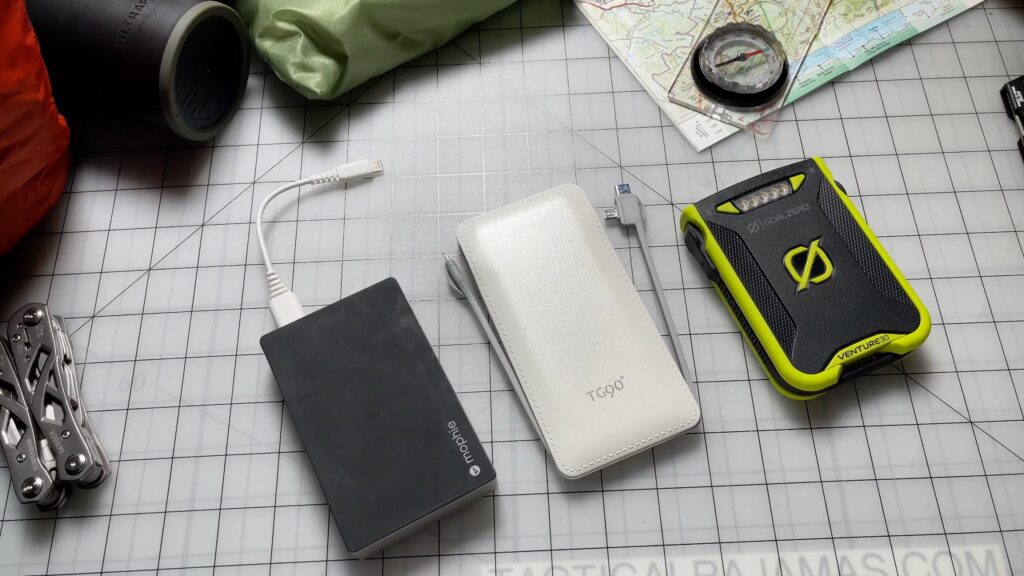
*Rechargeable power pack— The middle one is thin, light, claims 10,000 milli-amp hours, and has charging cords built in. The others are bigger and heavier, and the Goal Zero is ruggedized. For the Big Bob I have an additional power pack that can charge the Yaesu radio too. The problem you will have with any rechargeable power pack is that it will lose charge over time, so if you want to store your BOBs in a remote place that will be an issue.
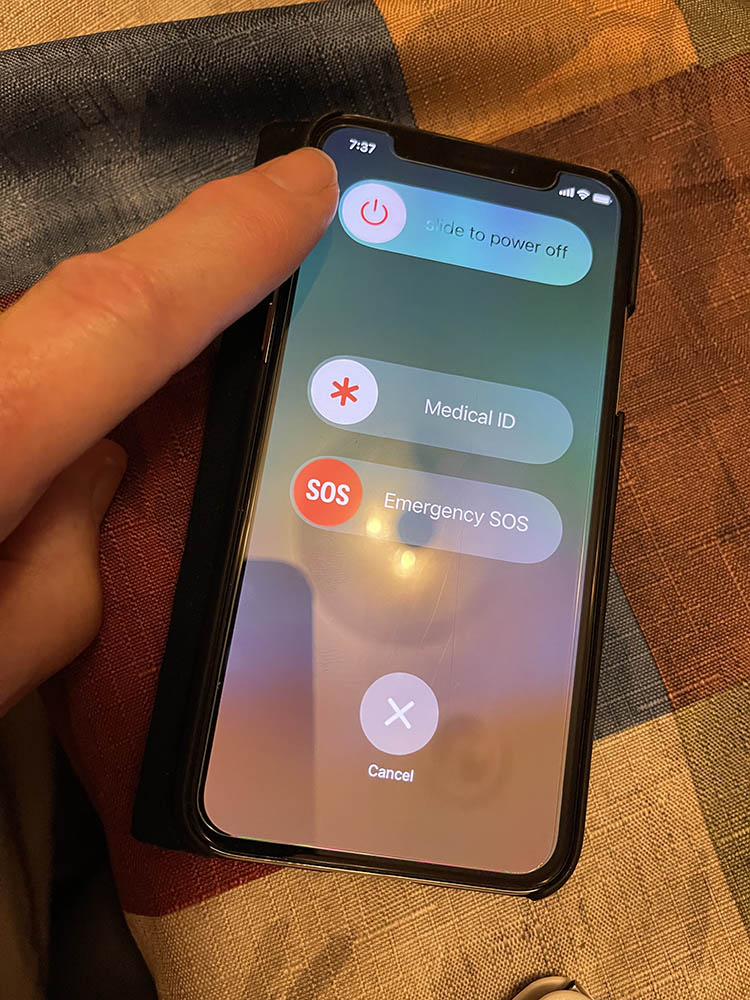
*Cell phone— Keep it turned off as much as possible to preserve the battery. Most people don’t know that a cell phone sends out a pulse of power at regular intervals to stay in contact with local cells, and if it doesn’t get a response it cranks up to maximum power and checks again. In an area with no cell service that can kill your battery in no time. Try to arrange specific times when family members will know you have your phone on, so you can leave it off otherwise. In the case of a government pogrom or civil war a cell phone can be used to track your location any time it’s turned on, so be tactically savvy about using it.
*Footwear— You never know when a disaster will occur. Much of the time when I’m working from my house I’m wearing slippers or sandals. In warmer weather I keep an older pair of athletic shoes and wool socks in the outside pocket of my Fast BOB. If I’m wearing appropriate footwear when I have to bug out, I discard them before leaving. If I’m not wearing appropriate footwear, I can probably go a short distance to escape immediate danger before changing into the shoes. For the Big BOB, instead of athletic shoes I keep a pair of boots that are older but still good enough to use.
*Zipper plastic sandwich bags— Have at least one along to keep garbage in. Put it in the bear bag at night. I know of one woman who left a candy bar wrapper in the pocket of her pack, and a mama bear ripped apart her tent and the pack in the middle of the night. Don’t be like her.
*Plastic grocery bags— Get the best-quality you can find. In cold weather you may need to put them on over your socks before you put your shoes on.
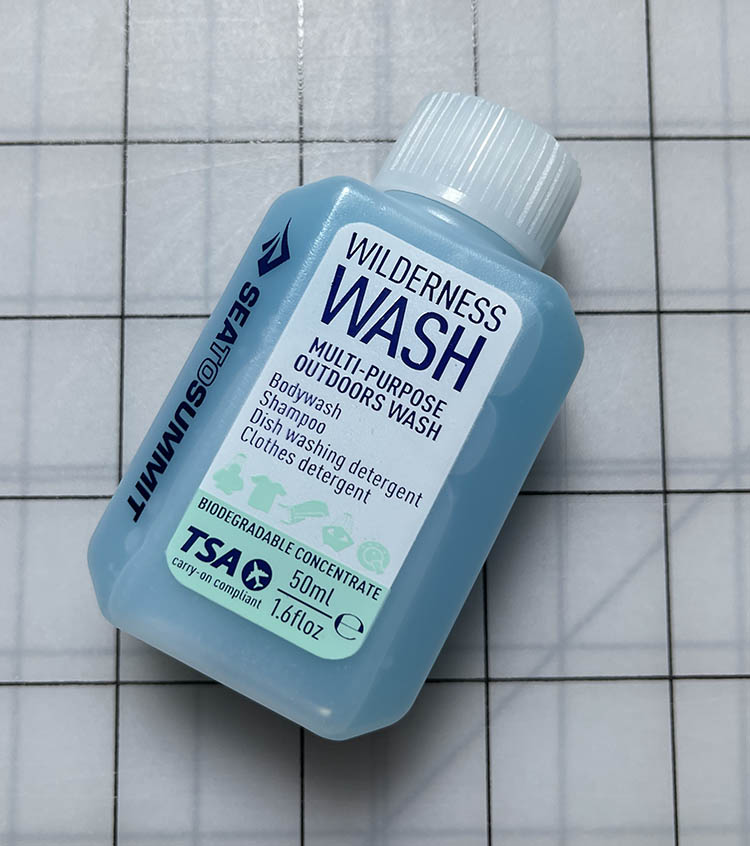
*Soap— Wilderness Wash and Camp Suds are biodegradable. The 1.5 oz size of Wilderness Wash will probably last you a week, depending on if you use it for body washing or just dishes and such. Put a bigger one in your Big BOB.
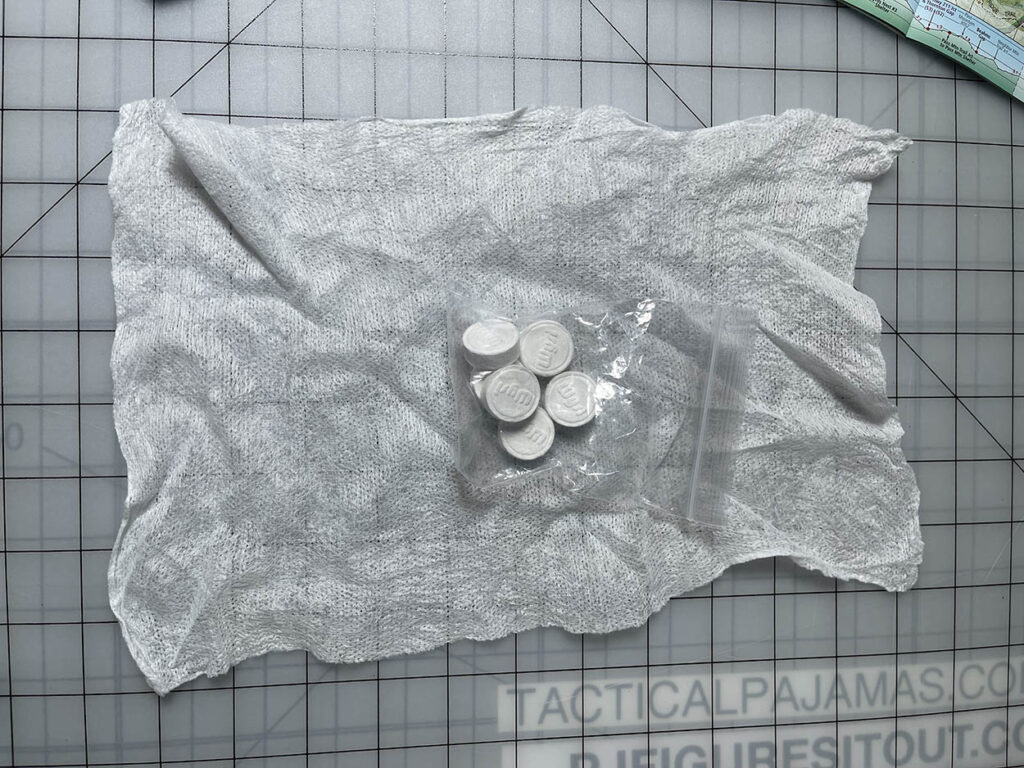
*Washcloths– You can get washcloths that are compressed into small tablets, and they work pretty well. Great for keeping faces and utensils clean
*Hand sanitizer– Three or four ounces should do for three days.
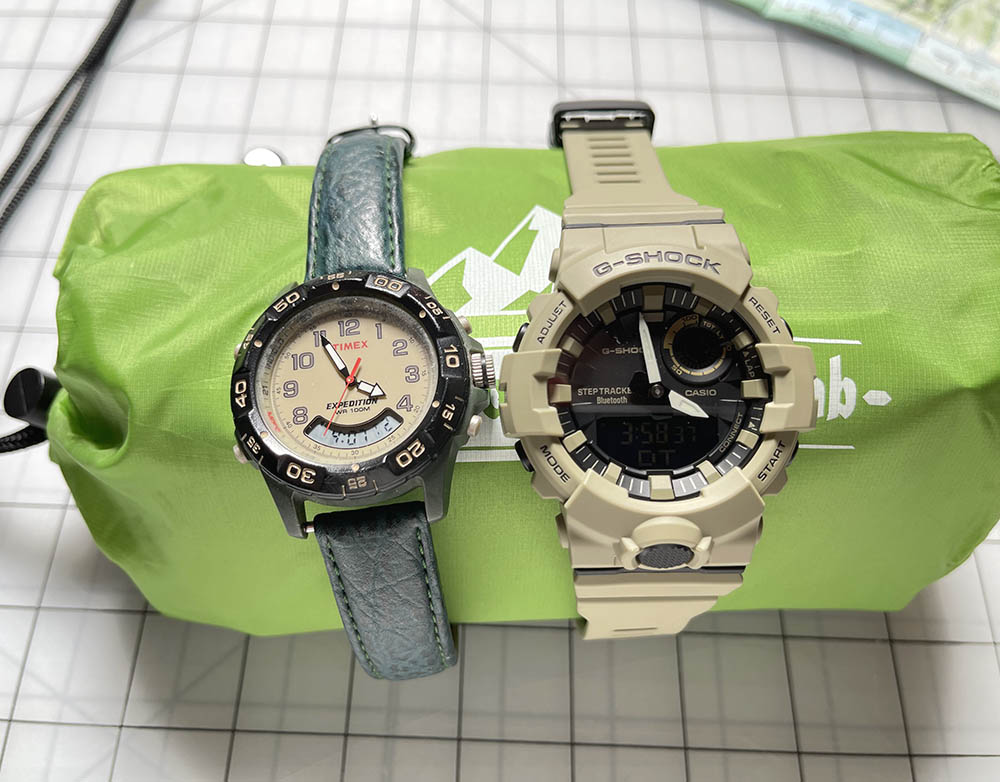
*Watches- Your common smart watch will need to be charged every day or two, which will quickly run down your power pack. You might want to consider a quartz watch with a long-lasting battery, or a self-winding watch, or an Eco-Drive. Casio G-Shock watch batteries can last up to three years.
THINGS THAT ARE NOT IN THE FAST BOB
-Ferrocerium rod— There is a small one on my Leatherman Signal, but the two lighters and/or matches should easily take me through 72 hours. Save the big one for the Big BOB.
-Metal cup, cooking pot, stove— Those are definitely in the Big BOB, but not the Fast BOB, as none of the food I’m bringing along will need to be cooked. However, I do throw in a spoon or spork, in case somebody gives me some cans of food or I come across a store where I can re-supply. In the winter I might make an exception and bring a cup for a hot beverage. The fuel for the stove is big and bulky, so your call as to whether or not it’s worth the weight and space. You can consider cooking over a campfire, which takes time and bother and is dangerous in some situations.
COLD WEATHER
I change over my BOBs for cold weather at the beginning of September and for warm weather at the end of May. I put in:
-Helikon Swagman poncho liner
*Gloves
*Long underwear
*Alpaca-wool hoodie sweater, beanie, and neck warmer
If you live in Alaska or Canada, or any area that can get really cold, your needs will increase significantly. You’ll need heavier sleeping bags, clothing, and more protection from four-legged beasts. You might want to consider the Woobie Doobie insulated poncho liner or a sub-zero-rated sleeping bag.
Good luck to everyone, and let’s hope we never have to bug-out
